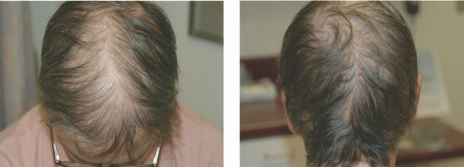Different Services Provide By Hair & Laser Clinic
Different Services Provide By Hair & Laser Clinic
Telogen Effluvium
What is telogen effluvium?
It is normal to shed approximately 40 to 60 hair from our scalp daily as part of our hair cycle. Hair regrows automatically so that the total number of hairs on our head remains constant. Telogen effluvium occurs when there is a marked increase in hairs shed each day more than 100daily . An increased proportion of hairs shift from the growing phase (anagen) to the shedding phase (telogen). Normally only 10% of the scalp hair is in the telogen phase, but in telogen effluvium this increases to 30% or more. This usually happens suddenly and can occur approximately 3 months after a trigger.
What causes telogen effluvium?
Increased hair shedding in telogen effluvium occurs due to a disturbance of the normal hair cycle. Common triggers of telogen effluvium include childbirth, severe trauma or illness, a stressful or major life event, marked weight loss and extreme dieting, a new medication or withdrawal of a hormone treatment. No cause is found in around a third of people.
Is telogen effluvium hereditary?
Telogen effluvium is not inherited, and it can affect all age groups and both genders equally.
What are the symptoms of telogen effluvium?
Most people become aware of hair coming out in increased amounts. This is most noticeable after washing or brushing the hair with more hair found in the plug hole, or on the hair brush or comb. Some people will notice increased hair on the pillow in the morning or around the house. Usually there are no symptoms, but occasionally telogen effluvium can be accompanied by tenderness and altered sensations in the scalp known as trichodynia.
What does telogen effluvium look like?
Hair shedding in telogen effluvium is usually from all over the scalp. Hair density decreases in the early stages resulting in reduced volume of hair.
How is telogen effluvium diagnosed?
The diagnosis is usually based on appearance and the history of the hair shedding. The hair may be gently pulled to assess if an increased quantity of hair is shed and occasionally hairs are plucked from the scalp so that they can be examined under the microscopy.
Can telogen effluvium be cured?
Telogen effluvium usually resolves completely in 3 to 6 months, as the normal length of telogen is approximately 100 days (3 to 6 months) after which period the hair starts growing again (anagen phase). However depending on the length of the hair, it may take many months for the overall hair volume to gradually return to normal.
Other types of hair loss
There are many other causes of hair thinning including female pattern hair loss (androgenetic alopecia) which may also present in a similar fashion to telogen effluvium and sometimes there is an overlap of these two conditions.


